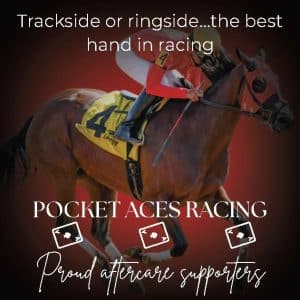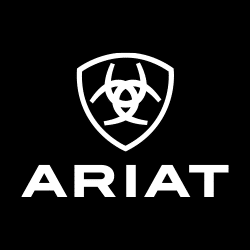How to evaluate recently retired racehorses for second careers
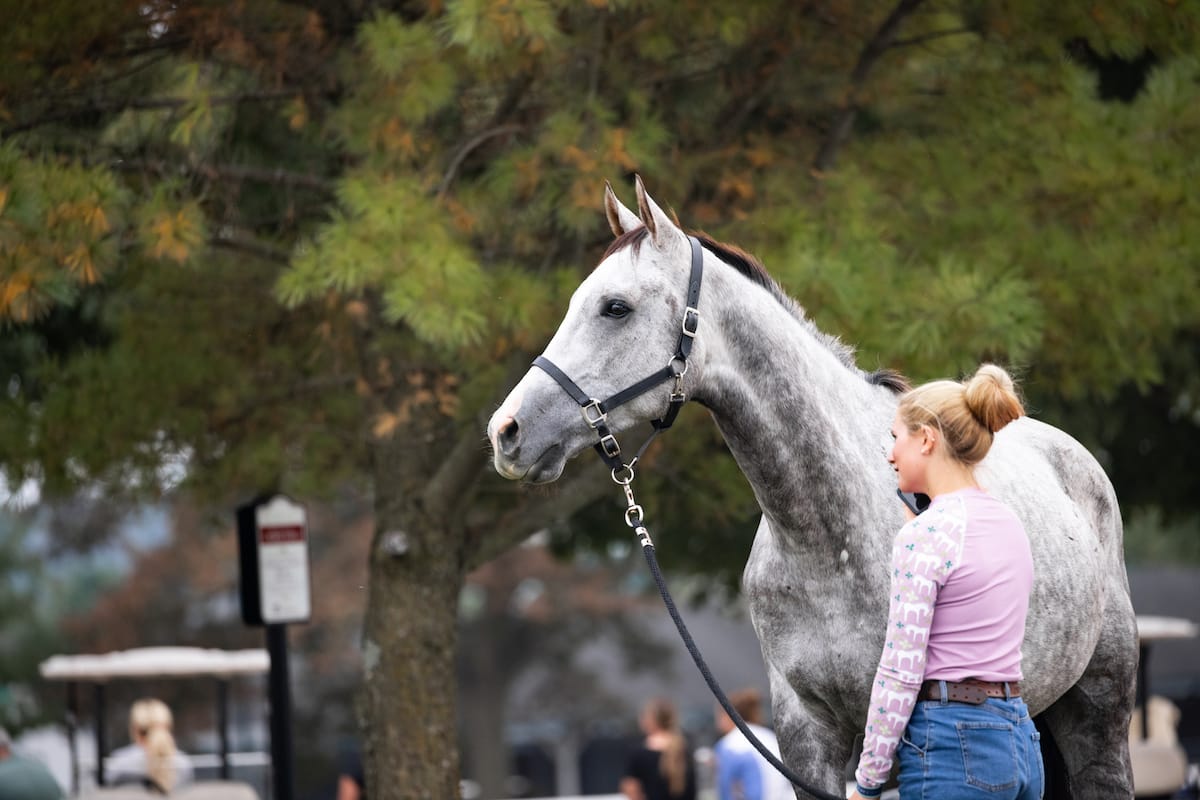
Bethany P Photography
“This horse has no talent,” a trainer tells Danielle Montgomery, as one of his grooms leads a filly onto the asphalt behind the shedrow at Parx Racing.
The filly, who raced at the Pennsylvania oval just two days earlier, strikes up a toe-flicking, daisy-cutting trot, and Montgomery says to herself, “That’s a hunter.”
A horse’s talent, after all, is in the eye of the trainer. And after eight years of assessing hundreds of Thoroughbreds coming off the track into retirement organization Turning for Home’s care, program administrator Montgomery has plenty of experience pinpointing a horse’s potential. She’s the first person to put eyes on recent retirees and determines which of the nonprofit’s partner farms should receive them.
To give OTTBs the best chance at second-career success, rehomers, trainers and aftercare organization staff have become skilled at identifying the discipline in which a horse might be most likely to excel. This step in the immediate post-retirement process is critical for ensuring horses get placed with the right trainers and end up with caring new owners who can showcase their talents in a positive light. Here’s how experienced industry professionals do just that.
The Body
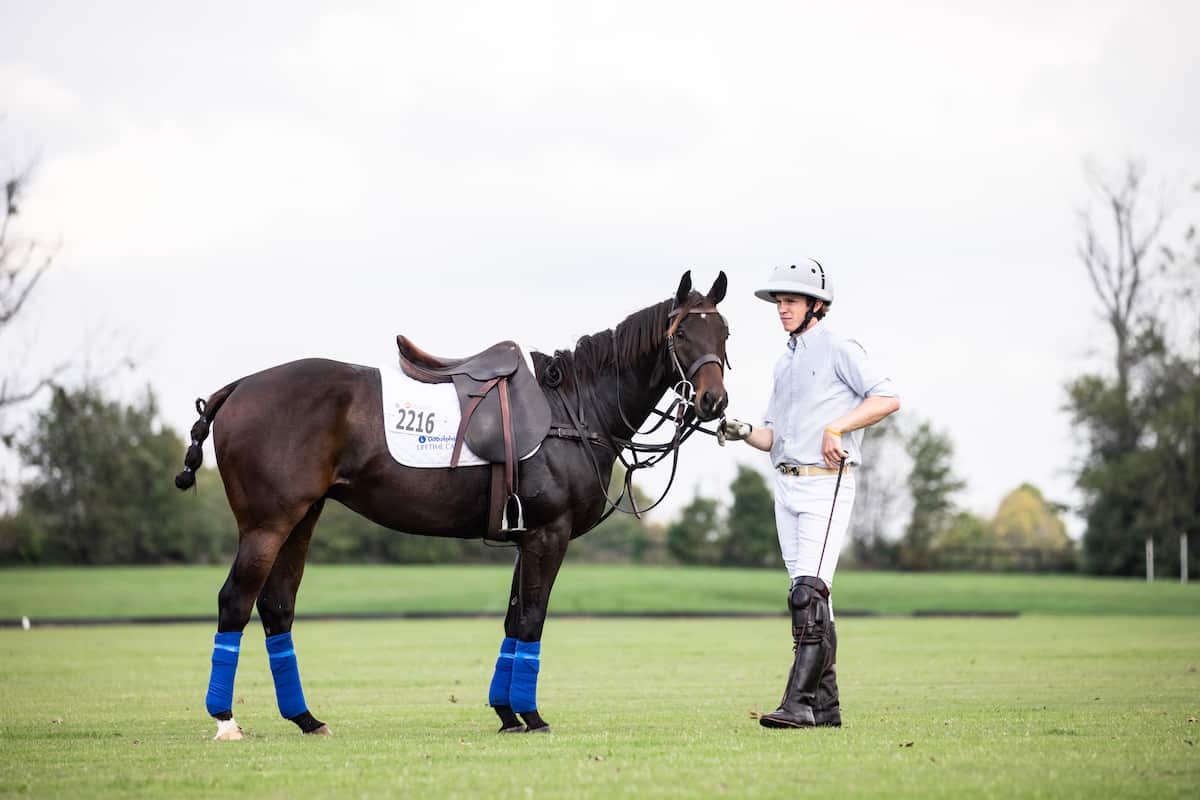
Size can affect which discipline a horse tends toward. Polo trainers, for instance, prefer a short, compact ride. Bethany P Photography
Horses come to MidAtlantic Horse Rescue, in Chesapeake City, Maryland, from a variety of sources — directly from race trainers, through Maryland’s Beyond the Wire aftercare program and from auctions. Regardless, executive director Beverly Strauss and her staff assess each horse’s physique, looking for signs of potential as well as limiting issues. She says the latter might include knees that are offset or have some effusion (fluid swelling), bowed or thick tendons, obviously arthritic fetlocks and poor hoof quality or shoeing (see page 48). Then they move on to the horse’s shoulder, back length and hind-end angles.
“A basic assessment will give us an initial idea if the horse might be limited and help determine basic potential,” Strauss says. “If a horse is uphill, shorter backed, with a higher head and neck set, for instance, we think eventing/jumpers/dressage. A longer, low balance makes us think hunters or pleasure initially.”
Montgomery performs a similar evaluation, while also focusing on the horse’s size. She might send one that’s small in stature, for example, to her polo contacts. She also notes whether a horse is likely to continue growing.
“Where are they going to be size-wise?” she says. “A 2-year-old with a nice chest on him might be 14.3 hands now, but he’s probably going to jump up a whole hand.” This might be a horse she places with a farm that can give him time to develop.
A horse that’s built like a Quarter Horse — square, short-coupled, with strong bone and short cannon bones — naturally screams Western mount.
“I don’t want that leggy look for my Western horses,” says Montgomery. “I want them to look more compact. Of course, every horse can do everything at a different level, but for my competitive barrel horses, I’m looking for something that looks like it could really roll over its hindquarters.
“Sometimes we get these gawky 3-year-olds that are 17 hands, and you know it’s going to take them two years to figure out where their feet are supposed to go,” she adds. “I’m not going to take that horse and start him doing collection and turns and rollbacks. I’m going to let him do cross-country, gymnastics, basic jumping.”
Montgomery says she also looks for signs a horse is athletic and uses himself correctly; that horse might be more likely to succeed at higher levels of sport. “I’m looking for how their shoulders tie in, and I like it when they have that nice muscling in front of their shoulders and up over their withers. That horse has some ability, he’s using himself well.”
The Brain
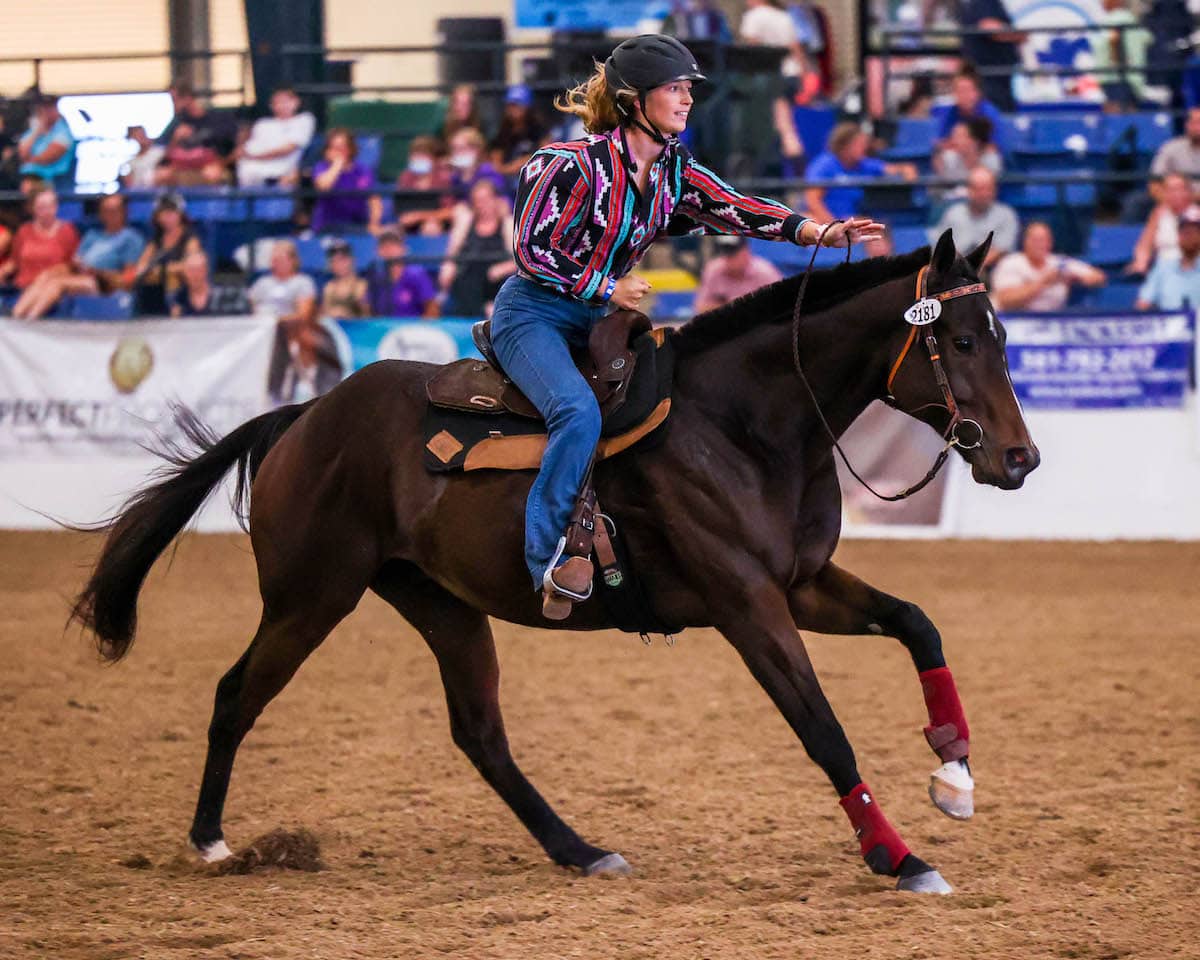
Naturally, a Thoroughbred that’s built more like a Quarter Horse — square, short-coupled, with strong bone and short cannon bones — might make a good barrel or other Western mount. Canterclix
Both sources agree that an OTTB’s temperament can dictate the direction he goes, “especially if a horse looks like it has physical issues that will limit his ability to perform in a sport horse career,” says Strauss.
As part of her initial assessment, Montgomery says she’ll meet the horse in his stall to see how he behaves. She notes whether she can walk in the stall and go over the horse’s legs and back with no fuss or if the groom has to put a shank on the horse and hold him.
“Is this a horse that I can send to a lesson barn, or is this one that’s going to a professional barn only?” she says. “Because if he comes out like a shark, then he’s not going to one of my barns that has kids running around.”
Strauss gauges the horse’s behavior in a variety of scenarios. How does he react to new surroundings? Does he need to be with a buddy? How engaged is he with humans?
“Many come in and are already ‘old souls,’ ” she says. “They have a confident air and are understanding and trusting and calm. We love those types, because they will suit a wide range of riders and careers.”
Others, she says, need days, weeks and even months to settle and adjust to their new lifestyles and receive treatment for issues such as gastric ulcers before she can truly determine their temperaments.
“Sometimes their true selves are higher energy and more reactive,” Strauss says. “Those types are typically more suitable for experienced riders or pros.”
On the other hand, a horse that looks like an upper-level eventing or jumping specimen might only have the demeanor for pleasure riding or local shows. Strauss says these are the ones that “come out and stand at the mounting block like they have done it forever; steer, walk, trot and canter both ways without worrying about what is happening in the adjoining pastures. Then there are some that just can’t stand not having something to do all the time. They need a job and a purpose. Those typically are the event and jumper types.”
The Movement
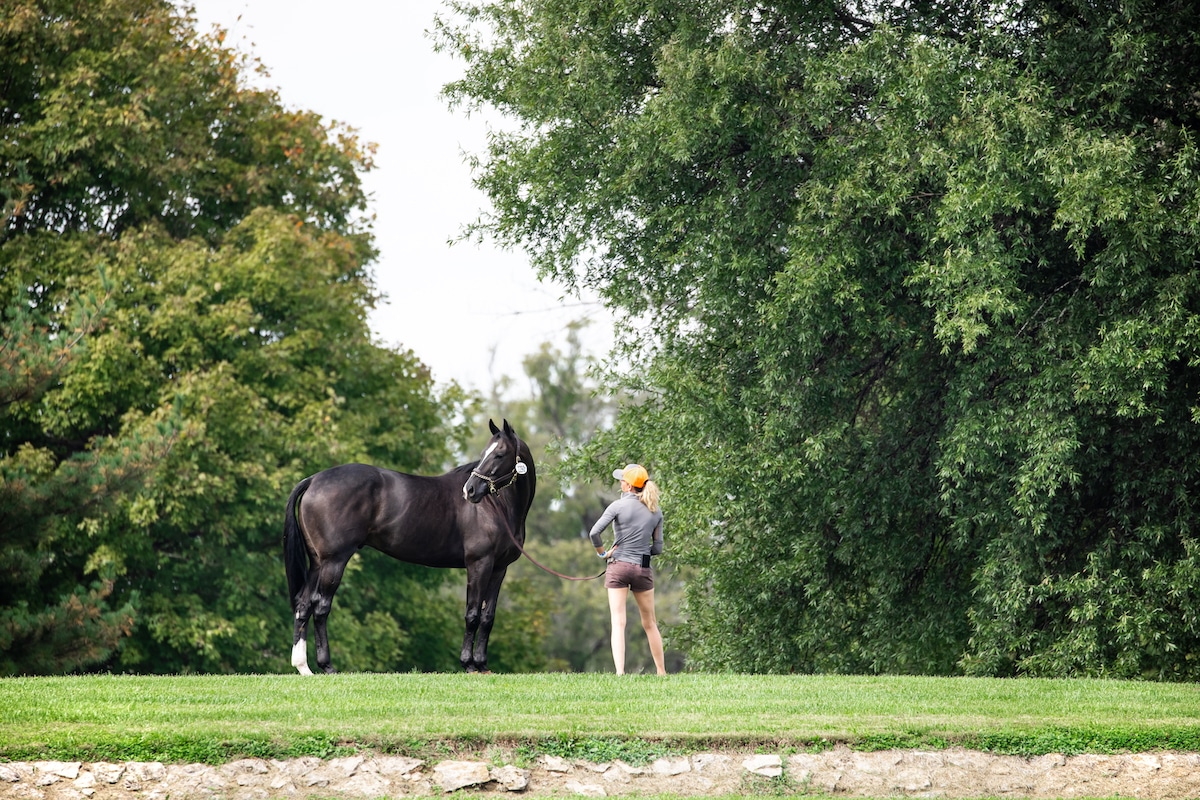
Proper muscling around the chest, topline and hind end might indicate a horse uses himself well and could be an athlete in nearly any pursuit. Bethany P Photography
A horse’s stride length and movement can provide trainers and rehomers with early indications of athletic potential.
“An uphill horse with a lot of action is certainly more suited for eventing, jumpers and dressage,” says Strauss. “A horse who moves from the shoulder with flat knees and a sweeping stride is saying ‘hunter’ to us.”
Montgomery agrees the horse with the big suspension and floaty trot is a likely hunter or dressage candidate. A horse with a short back and a 12-foot stride might be an eventer. A Western prospect should be powerful but able to collect himself. For this reason, she might point a “catty” OTTB with a shorter stride toward a Western discipline.
“We often will put a Western saddle on a horse that might not have very big movement, because their trot will be easier to sit,” says Strauss. “We placed one mare with an adopter who is a professional dressage trainer and judge, but because the mare wasn’t the biggest mover, she switched to Western dressage, and she is killing it there.”
Montgomery says she typically gets the best feel for a horse’s stride and movement during its first few turnouts. “If I have one that’s sound coming off the trailer, we’ll put them in the round pen or watch it do that first turnout,” she says. “You get a much better idea of a horse’s stride and how he carries himself in those first couple of turnouts. They go across the field, and you can say, ‘OK, well he’s a little stiff there,’ but you see a lot more than you do at the end of a shank.”
Strauss adds that the way a horse moves when he first comes off the track might differ significantly from his movement after let-down. “You can get a basic idea, of course, but often horses come in tight over their topline, ‘hocky’ (showing excessive hock action) behind, uneven, etc.,” she says. “This is where chiropractic, pulsing (pulsed electromagnetic field therapy) and other forms of therapy come in. And as the horse feels better, they will move more freely and generally become less anxious.”
Back to the Drawing Board
While all the traits described here are helpful starting points for assessing a horse’s potential, there’s no formula for determining whether an OTTB will be a good barrel horse or eventer or polo pony.
For this reason, trainers should recognize the signs a horse might be better suited for another avenue and be amenable to redirecting his career.
“As we get to know each horse and do the basic restart, we find out who is happy to have a low-level, low-stress job and who wants and needs to work,” says Strauss.
Montgomery recalls a horse she sent to an eventing barn and later received a call from the trainer saying he might prefer working cattle or running barrels. So they made a career change for the better.
“We’ll switch horses up and get them to somebody that can bring them along a little bit better, rather than trying to market them a certain way right from the beginning,” she says.
After all, she adds, “Horses make liars out of us.”
This article was originally published in the Spring 2022 issue of Off-Track Thoroughbred Magazine, the only publication dedicated to the Thoroughbred ex-racehorse in second careers. Want four information-packed issues a year delivered to your door or your favorite digital device? Subscribe now!









